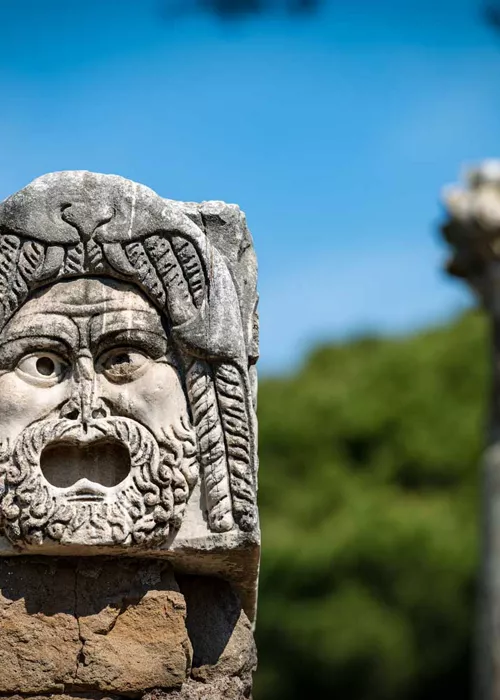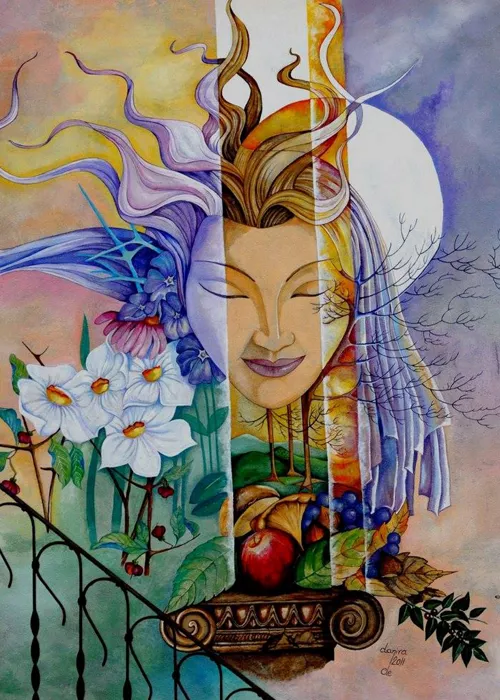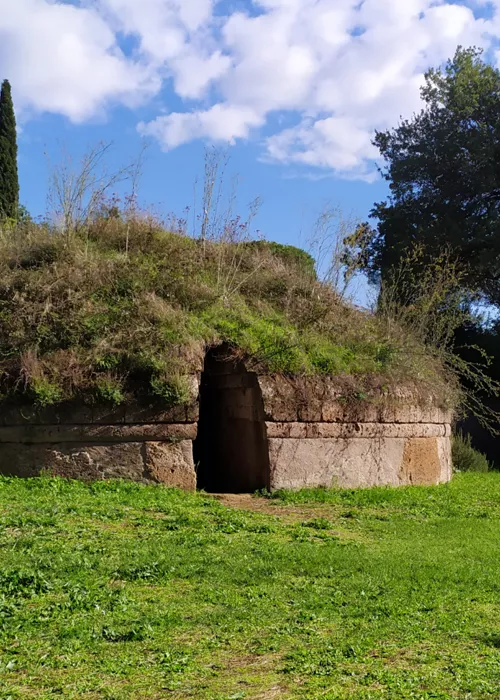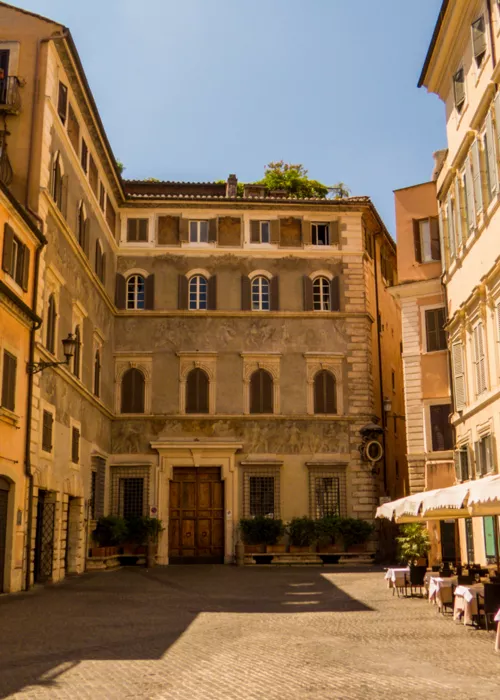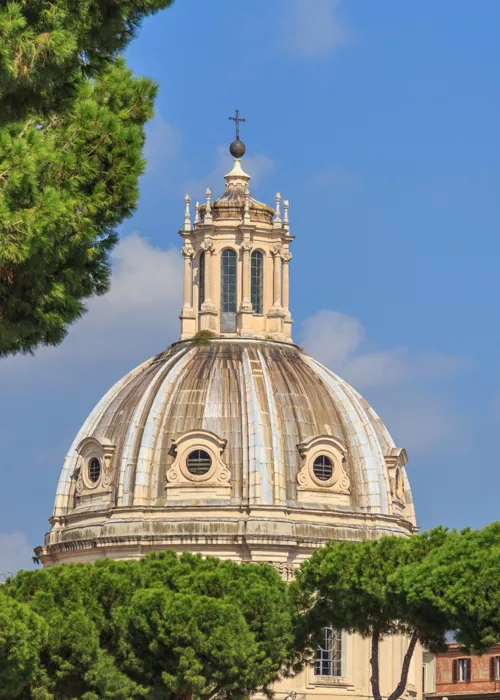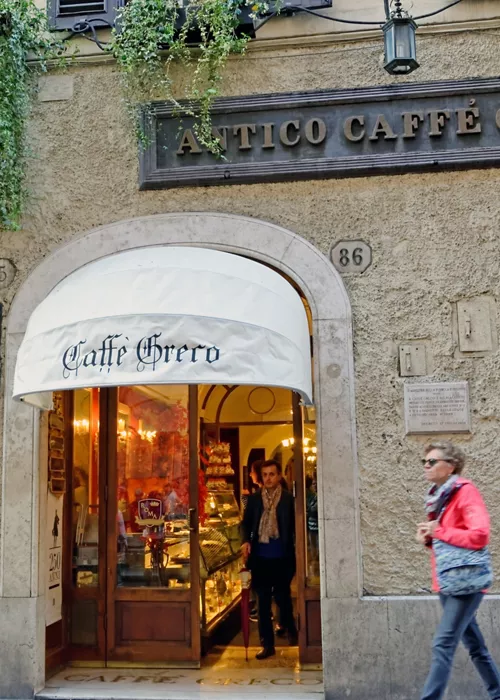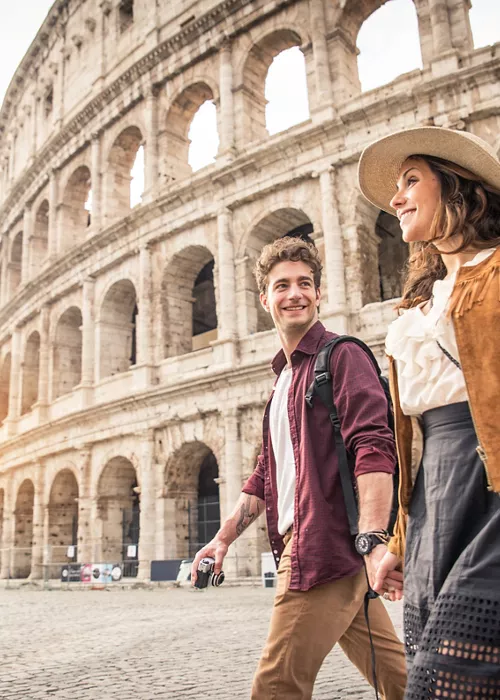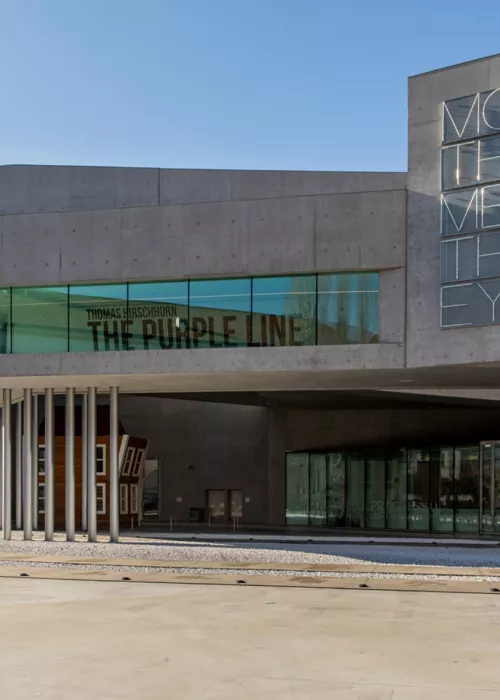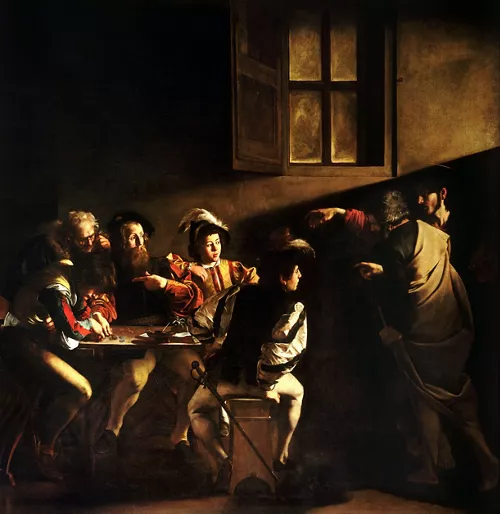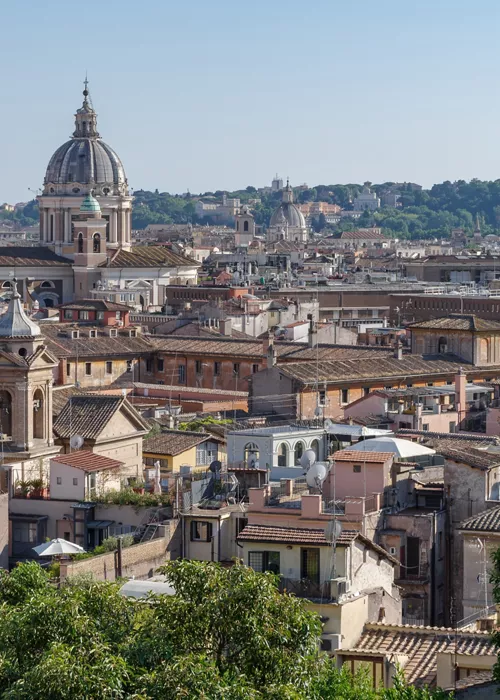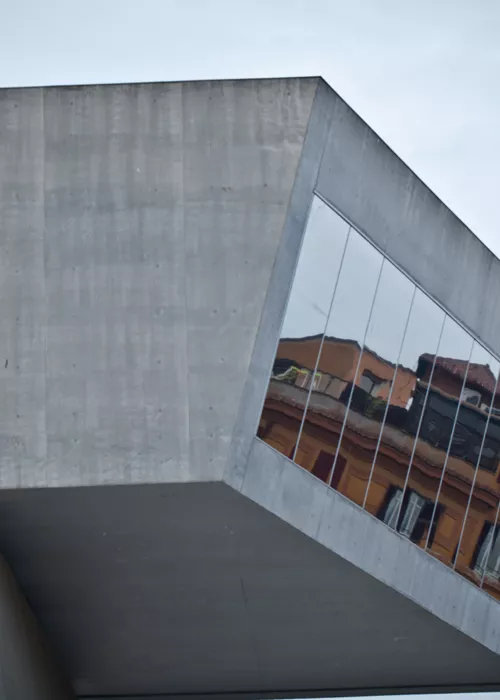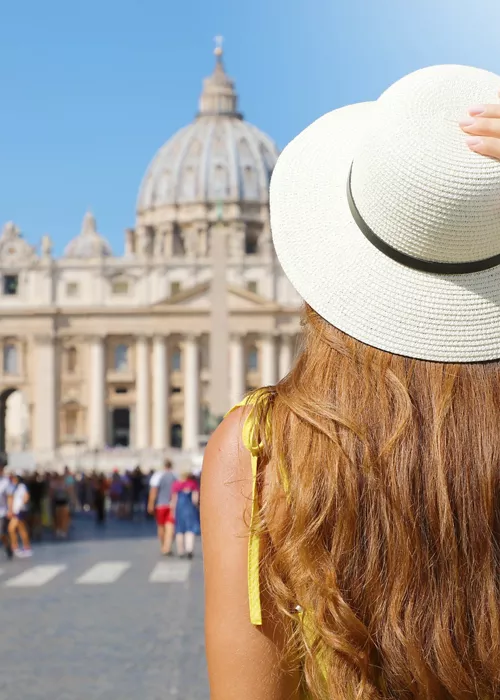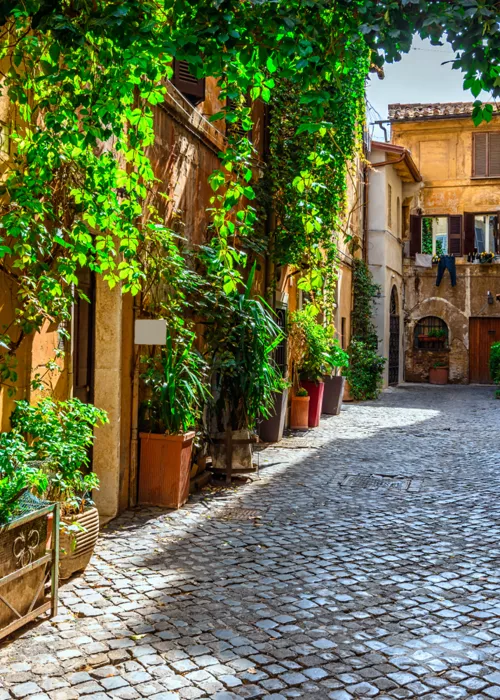Rome and the Jubilee 2025
8 minutes

In 2025, the Church celebrates the Jubilee, the holy year that the Pope has convoked periodically since 1300 and which marks an important milestone for the Catholic Church. It will be a major media event and the city of Rome will be a destination for millions of pilgrims from all over the world.
The interval between Jubilees has changed several times throughout history, but it is now 25 years: the last Jubilee before the next so-called 'ordinary' one was in the year 2000. While the event will be 'ordinary' according to the Church's definition, it will certainly be an extraordinary year for the capital.
The meaning of the Jubilee

For the Catholic Church, the Jubilee is a year of remission of sins, reconciliation, conversion and sacramental penance. It is also called a Holy Year and is the period during which the Pope grants plenary indulgence to the faithful who travel to Rome and perform particular religious practices: passing through the Holy Door, confessing, receiving communion, praying and performing a work of piety, mercy or penance.
A few explanations for those unfamiliar with the terms used by the Catholic Church. The noun "remission" derives its meaning from the verb to remit, which means to renounce what is due (in this case: the punishment due for having sinned). Indulgence, on the other hand, is the remission of temporal punishment for sins already 'forgiven' through confession.
The Holy Door

A Holy Door is a door of a basilica that is only opened on the occasion of a Jubilee. It has a very precise meaning: it is the symbol of the passage that every Christian must make from sin to grace, thinking of Jesus who says "I am the gate" (John 10:7).
The Holy Doors in Rome can be found in the basilicas of St Peter's in the Vatican, St John Lateran, St Mary Major and St Paul Outside the Walls. They are those of the "major" churches and are opened by the Pope in Jubilee years and closed again at its end.
The adjective "major" is used to define the four papal basilicas in Rome, which acquire fundamental importance during Jubilee years. Curiously, with the exception of St Peter's, they are among the least visited churches in Rome.
There are, however, other Holy Doors around the world: the Pope can, in fact, decide to grant Holy Doors to any church in the world.
But how does the ritual of the opening of the Holy Door during the Jubilee take place?
Until 1975, the Holy Door of St. Peter's was walled up at the end of each Jubilee and uncovered at the beginning of the next one. The pope gave the first three hammer blows to the wall, which was then taken down by bricklayers. Since the Jubilee of 2000, Pope John Paul II decided to change the ritual: the wall is demolished in the days leading up to the opening, the key to open the door is taken out of a box, and the Pope symbolically pushes the doors open. With this gesture, the Jubilee officially begins and from that moment on, the door remains open throughout the year for the passage of pilgrims. The Holy Year ends with its closing.
The history of the Jubilee

"As, in the year of Jubilee, the Romans, confronted by great crowds, contrived a plan
that let the people pass across the bridge,
for to one side went all who had their eyes
upon the Castle, heading toward St. Peter’s,
and to the other, those who faced the Mount."
(Inferno XVIII, 28-33)
The first Jubilee in Catholic history was proclaimed in 1300 by Pope Boniface VIII: for the first time (as far as we know) a plenary indulgence was granted to all those who visited the basilicas of St Peter's and St Paul's outside the walls 30 times (15 for non-Romans), probably in the wake of the Celestine Pardon of 1294 and motivated by the unusual crowds of pilgrims who had been arriving in Rome since the end of 1299. This Jubilee is recalled by Dante in the Divine Comedy, describing the huge flow of pilgrims that occurred, with two-way traffic on the bridge in front of Castel Sant'Angelo.
The Jubilee has its origins in Jewish tradition. Every 50 years, the Jews decreed a year of rest for their fields, in order to let the soil lie fallow and make it more fertile for the following season. At the same time, slaves were freed and confiscated lands were returned, so that inequalities were settled. Even the name of the Jubilee itself has a Hebrew etymology: the Hebrew word "jobel" (yobel) refers to a ram's horn, which was blown to indicate the beginning of the Jubilee.
How did Rome appear to pilgrims in the 1300s?

What did the pilgrims who arrived in Rome for the first Jubilee see? What does Dante see in that city, reduced to a few thousand inhabitants and spread over a huge area among ancient ruins scattered on either side of the Tiber?
The celebration of the first Jubilee fell at a time of great cultural ferment and Rome, under the impetus of the religious schools, was a city able to compete with Florence and Venice in terms of its intellectual and artistic development. Monastic orders settled there, also bringing new life to the architecture of the time, as in the case of the Franciscans in Santa Maria in Aracoeli.
Pilgrims coming from the north, like Dante, arrived in Rome along the last portion of the Via Francigena and, on reaching Mount Mario , would gaze on the longed-for Eternal City. Others came from the sea and, sailing up the Tiber in smaller boats, landed at the river port of Ripa Grande, near Porta Portese, where the arched factory of the Pontifical Arsenal stands.
In the 1300s, pilgrims would see a city dotted with numerous patrician towers, although fewer in number than in the previous century: many had been demolished by the senator Brancaleone degli Andalò, in the mid-1300s, on behalf of the city authorities. Today, unfortunately, even fewer remain: the most monumental is the Torre dei Conti, a great family of popes, near the Colosseum, at the end of Via Cavour.
It would take a whole book to describe the churches and holy places of Rome in that century. An extraordinary concentration is found on the Caelian Hill: San Gregorio al Celio, with its splendid mosaic floor, was so important that the Conclave for the election of a pope was held there. Also beautiful and sumptuous is the church of the Navicella (Santa Maria in Domnica) commissioned by Paschal I, with splendid mosaics. The church of Santo Stefano Rotondo, with its circular ground plan, has been the Hungarian national church for years.
Coming down from the Caelian Hill, there are two more splendid religious buildings: the basilica of the Santi Quattro Coronati, a large fortified building with a striking cloister, and San Clemente. This is an extraordinary church, on several levels, in which the lowest one retains medieval vestiges that are, to say the least, unique: a fresco from around the year 900 that features one of the very first vernacular inscriptions, as in a comic strip: "Pull, you sons of bitches".
No less important are the places on the banks of the Tiber in front of Ripa Romea, on the Aventine Hill (Sant'Alessio, San Saba and Santa Sabina) or in the Greca district: Santa Maria in Cosmèdin (site of the Bocca della Verità) and San Giorgio al Velabro. Finally, there is the precious basilica of Santa Maria in Aracoeli on the Capitoline Hill.
And the Rome of the following Jubilees?

Every Jubilee was an occasion to beautify Rome and, in particular, to improve it and make it more welcoming for the many pilgrims who arrived here.
Some examples?
Urban redevelopment work in view of the Jubilee of 1400. Boniface IX took care of the necessary restoration of the roads connecting the churches on the penitential route, providing for it with money from oblations and alms. On the occasion of the Jubilee of 1450, the Church of Our Lady of the Sacred Heart was erected. For the Jubilee of 1475, in the Borgo district, the church of Santo Spirito in Sassia was rebuilt, together with the adjacent hospital. During the Jubilee of 1575, the Via Merulana was built and the early Christian church of San Saba, at the top of the "Piccolo Aventino", was enriched with apsidal frescoes. On the eve of the Jubilee of 1600, the church of Santi Nereo e Achilleo, built in the 4th century, was ornately decorated by Cardinal Baronio.
Let us now leap forward a few centuries, and fly more towards our own time, to the new millennium.
Rome arrived at the Jubilee of 2000 prepared and did so thanks to a public works plan that began in the years immediately before it. Starting in the 1990s, the pedestrianisation and redevelopment of many public spaces, both central and peripheral, began, while old buildings and industrial plants were restored and reused for museum purposes. This wave of recovery began with the conversion of the Scuderie del Quirinale into an exhibition venue, designed by Gae Aulenti between 1997 and 1999. During the Jubilee Year of 2000, a monumental organ by Barthélémy Formentelli was installed in the San Bruno chapel in the Basilica of St Mary of the Angels and of the Martyrs, while in the Tor Tre Teste district stands the Church of God the Merciful Father (also known as Dives in Misericordia), designed by Richard Meier specifically for the Jubilee of 2000.
The plan continued also in the following years. In 2005, the Capitoline Museums (2005), extended to include the industrial spaces of the Montemartini power station, and the Museum of Contemporary Art in Rome (Macro) were renovated. During the Jubilee, public transport benefited from major investments for the extension of the existing metro lines and the new Line C construction sites. Starting in 2013, the progressive pedestrianisation of Via dei Fori Imperiali was carried out in view of the construction of the "largest archaeological park in the world".



